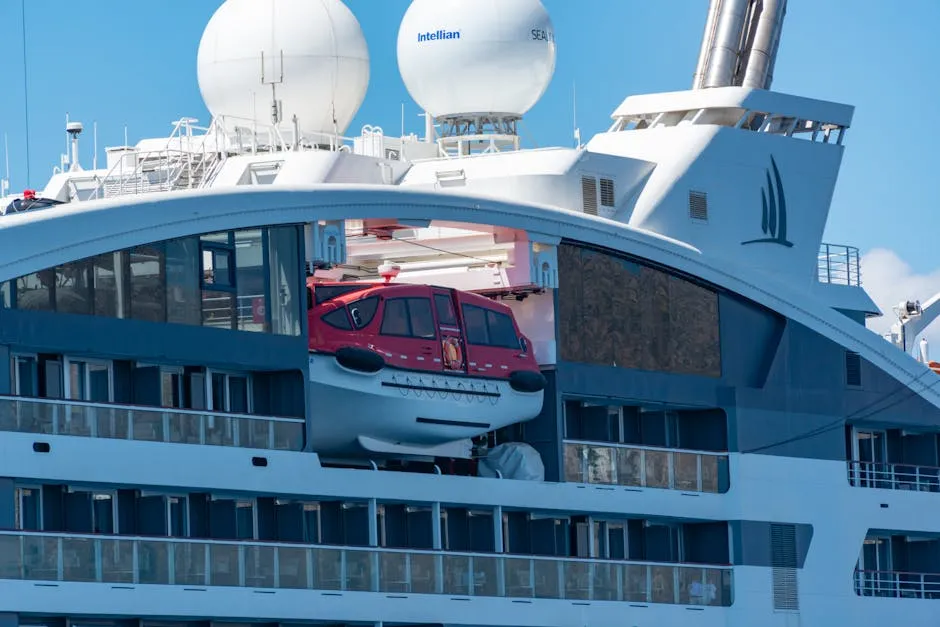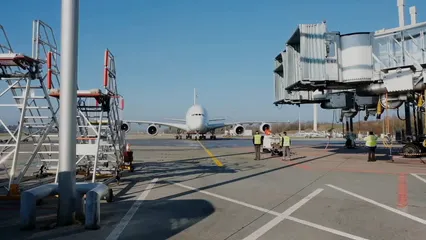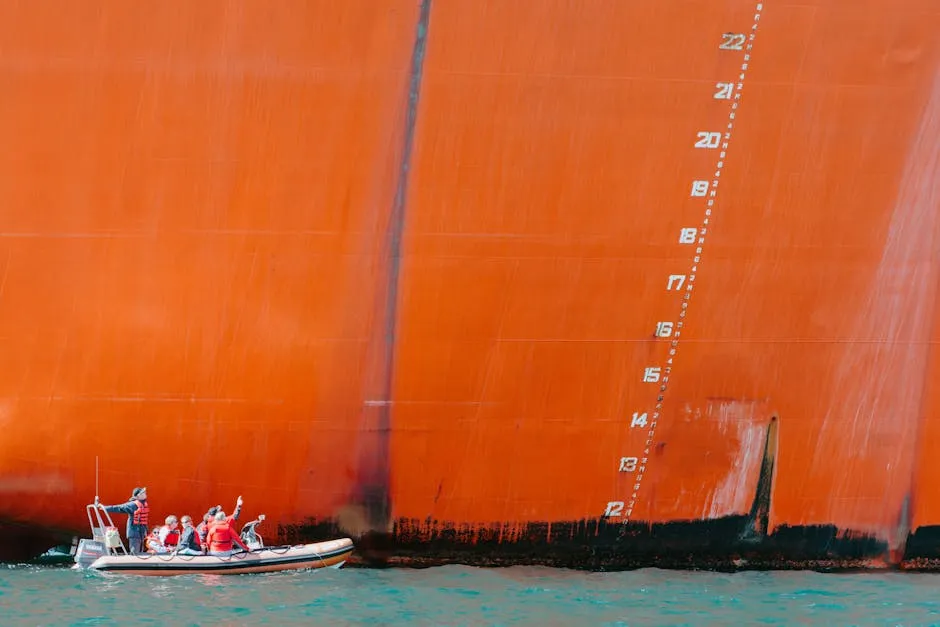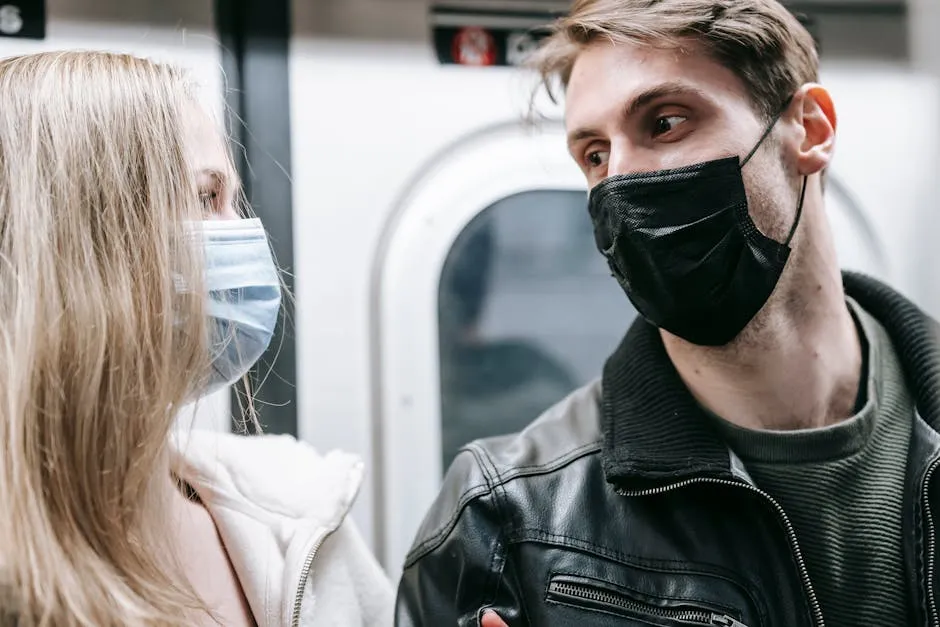Introduction
When it comes to travel, safety is a hot topic. Understanding safety statistics for different modes of transportation is crucial. After all, no one wants their vacation to turn into a horror story!
With the rise of cruise travel, it’s important to compare it with the well-established safety record of air travel. People are flocking to cruise ships for leisurely escapes, fancy buffets, and endless entertainment. But how do these floating hotels stack up against airplanes?
This article aims to compare cruise ship safety statistics with air travel statistics. By the end, you’ll be equipped with insights to make informed choices about your travel options, whether you’re sailing the seas or flying high in the sky.
Overview of Safety in Transportation
Importance of Safety Statistics
Safety statistics are like the GPS of travel—they guide us in making informed decisions. They reveal the realities of risks associated with different modes of transportation. Risk perception varies from person to person, and many factors influence it. For example, some fear flying due to sensationalized news stories about airplane crashes. Others might feel uneasy about being in the middle of the ocean on a cruise ship.
Understanding these statistics helps to demystify travel risks. With accurate data, travelers can weigh the odds and choose their adventures wisely.

To ensure you’re prepared for any travel mishap, consider investing in an Emergency Preparedness Kit. This handy kit can help you tackle unexpected challenges during your trip, ensuring that you and your loved ones stay safe and sound.
General Statistics About Travel Safety
Globally, transportation safety statistics paint a vivid picture. According to the National Safety Council, the odds of dying in a car accident are about 1 in 83. Meanwhile, commercial air travel shows a much safer profile, with about 1 in 7 million odds of a fatal accident. The Aviation Safety Network reported only 373 fatalities from scheduled commercial flights in 2011, amidst approximately 2.84 billion passengers.
Cruise ships also boast impressive safety records. The Cruise Lines International Association (CLIA) reported that the serious incident rate for cruise ships is only 0.16%. This statistic translates to a probability of 1 in 6.25 million for being involved in a serious event while cruising.
Overall, the data suggests that both air travel and cruise ships offer substantial safety. However, perceptions can be skewed by high-profile incidents that grab headlines, leaving travelers with lingering doubts. Understanding these statistics can help alleviate those fears and promote a more rational approach to travel safety.
For a deeper understanding of cruise ship safety statistics compared to air travel, check out this insightful article on cruise ship safety statistics compared to air travel.

Safety Features of Cruise Ships
Design and Construction
Cruise ships are marvels of engineering, built with safety as a top priority. Their design focuses on stability, which is crucial for navigating rough seas. The wide hull shape helps distribute weight evenly, making them less prone to capsizing.
Moreover, cruise ships are constructed using advanced materials that enhance durability. Steel and aluminum are commonly used for their strength and resistance to corrosion. This ensures that ships can withstand the rigors of the ocean and last for many years.
Another essential feature is size. Modern cruise ships can carry thousands of passengers and crew, yet they are designed to remain stable even in turbulent conditions. This size provides more safety options, such as multiple lifeboats and evacuation routes.
When it comes to severe weather, cruise ships are engineered to handle harsh conditions. They undergo rigorous testing to ensure they can withstand high winds and large waves. Additionally, ships are equipped with advanced stabilizers that help reduce motion, providing a smoother ride for passengers. This design consideration greatly enhances safety during inclement weather, allowing the ship to remain steady and secure.

Safety Protocols and Regulations
The safety of cruise ships is governed by stringent regulations set forth by the International Maritime Organization (IMO) and other governing bodies. These regulations dictate everything from ship design to crew training. Compliance is not merely a suggestion; it’s a requirement to ensure passenger safety.
One of the most crucial aspects of these protocols is the mandatory safety drills conducted before every voyage. Passengers are required to attend these drills, where they learn about evacuation routes, proper use of life jackets, and emergency procedures. This ensures that everyone on board knows how to react in case of an emergency.
Crew training is another vital component of cruise ship safety. Crew members undergo extensive training in emergency response and safety procedures. This training includes simulations of various scenarios, such as fire outbreaks or man-overboard situations. The well-prepared crew can act quickly and effectively, significantly increasing passenger safety.
Emergency procedures are clearly outlined and practiced regularly. This includes having a detailed plan for evacuation, medical emergencies, and even dealing with potential security threats. The combination of well-trained staff and established protocols creates a robust safety net for everyone on board.

Technological Advancements
Technology plays a significant role in enhancing cruise ship safety. Modern vessels are equipped with advanced navigation systems that utilize GPS and radar technology. These tools help in avoiding collisions and navigating through challenging waters. Continuous monitoring of weather patterns also ensures that ships can alter their routes to avoid storms or other hazardous conditions.
Fire detection and suppression systems have seen considerable advancements as well. Cruise ships are fitted with sophisticated smoke detectors and fire alarms that alert crew members instantly. Firefighting teams are trained to handle onboard fires efficiently, utilizing state-of-the-art equipment to contain any blaze before it spreads.
Surveillance technologies are also integral to cruise ship safety. Many ships are equipped with CCTV cameras that monitor key areas, promoting a secure environment. This technology helps in quickly identifying any unusual activities, enhancing overall safety.
In addition, modern cruise ships are increasingly incorporating biometric systems for boarding and security. These systems streamline the boarding process while ensuring that only authorized individuals have access to the ship. This high-tech approach adds another layer of safety for passengers and crew alike.
In conclusion, the safety features of cruise ships are a combination of thoughtful design, stringent protocols, and cutting-edge technology. Together, these elements work cohesively to create a secure environment for all who embark on these floating cities. As we navigate the waters of modern travel, cruise ships stand out as a remarkably safe choice, thanks to their robust safety measures.

Regulations and Inspections
The aviation industry operates under strict regulations enforced by the Federal Aviation Administration (FAA) and the International Civil Aviation Organization (ICAO). These organizations set comprehensive safety standards that all commercial airlines must follow. The FAA oversees the safety of civil aviation in the United States, while the ICAO provides guidelines for international air travel.
Routine inspections are critical in maintaining aircraft safety. Airlines must adhere to a rigorous schedule of inspections, checking everything from engines to navigation systems. These inspections ensure that any potential issues are identified and resolved before they can lead to accidents. Additionally, pilots and crew members undergo extensive training, including simulations of emergency situations. This training equips them to handle unexpected challenges in the air, thereby enhancing passenger safety.
Safety protocols in aviation are not just suggestions; they are mandatory. Flight crews must be familiar with emergency procedures, evacuation protocols, and the operation of onboard medical facilities. This preparedness is paramount in ensuring that any emergency can be handled swiftly and effectively.

Emergency Preparedness
Emergency preparedness is a cornerstone of safety on airplanes. Airlines have well-established emergency procedures that both passengers and crew must follow. Before takeoff, flight attendants brief passengers on safety protocols. This includes instructions on using oxygen masks, life vests, and the location of emergency exits.
In the event of an emergency, evacuation protocols are crucial. Planes are equipped with slides that facilitate rapid evacuation. Crew members are trained to guide passengers quickly and efficiently, ensuring that everyone can exit safely. Moreover, most commercial aircraft have onboard medical facilities, including first aid kits and trained personnel, ready to assist in case of health emergencies.
To further enhance safety, modern aircraft are designed with multiple redundant systems. These systems ensure that if one component fails, others can take over, keeping the aircraft operational. This engineering excellence significantly reduces the likelihood of emergencies arising during flights.
To ensure you’re ready for any travel mishap, consider carrying a Travel First Aid Kit. This portable kit will have you covered for minor injuries or ailments, allowing you to focus on enjoying your trip instead of worrying about what-ifs.
In conclusion, the aviation industry’s stringent regulations, routine inspections, and robust emergency preparedness protocols contribute to making air travel one of the safest modes of transportation available. Passengers can rest easy knowing that every flight is backed by a comprehensive safety framework designed to protect their well-being.

Air Travel Safety Statistics
When it comes to air travel, the statistics are impressively reassuring. According to the National Transportation Safety Board (NTSB), the odds of dying in a commercial flight accident are about 1 in 7 million. Not too shabby, right? In fact, the International Air Transport Association (IATA) reported a global accident rate of just 1.13 accidents per million flights in 2019.
The survival rates during crashes are also noteworthy. While any accident is terrifying, the majority of passengers involved in commercial airline incidents survive. A study by the NTSB revealed that over 95% of passengers on commercial flights are likely to survive a crash. This is due in part to the strict safety regulations and advanced technology in modern aviation.
Air travel has seen significant safety improvements over the years. With advancements in aircraft design, materials, and navigation systems, flying has become safer than ever. In fact, the aviation industry has implemented numerous safety protocols, such as regular maintenance checks and rigorous pilot training. These enhancements have led to a steady decline in accident rates, making air travel one of the safest modes of transportation available.
To make your travel experience even better, don’t forget to grab a pair of Noise Cancelling Headphones. They will help drown out the background noise of the plane, allowing you to relax and enjoy your in-flight entertainment or catch some much-needed Z’s.

Side-by-Side Comparison
| Safety Metric | Cruise Ships | Air Travel |
|---|---|---|
| Odds of fatal accident | 1 in 6.25 million | 1 in 7 million |
| Survival rate in crashes | ~80% (varies by incident) | ~95% |
| Global accident rate | 0.16% serious incidents | 1.13 accidents per million flights |
| Regulatory body | International Maritime Organization | Federal Aviation Administration |
| Average fatalities per year | Low, with notable incidents like Costa Concordia | Few, with notable events like MH370 |

The implications of these statistics are significant. Travelers often perceive air travel as safer due to the sheer volume of data and continuous improvements in technology and regulations. In contrast, cruise incidents, while statistically infrequent, tend to attract more media coverage when they occur, impacting public perception. Understanding these statistics helps travelers make informed choices about their safety preferences, whether they’re soaring in the skies or sailing the seas.

Environmental and Health Risks
When it comes to travel, health risks can be a real buzzkill. Cruise ships, while floating paradises, can sometimes become breeding grounds for germs. Norovirus outbreaks are infamous among cruise-goers. This highly contagious virus can spread like wildfire in close quarters. Passengers can find themselves battling nausea, vomiting, and diarrhea—definitely not the vacation vibes anyone wants! The COVID-19 pandemic further amplified these concerns. Ships like the Diamond Princess became infamous for onboard outbreaks, leading to quarantines that felt more like a scene from a horror movie than a vacation.
On the flip side, air travel isn’t without its health risks. Planes are cramped spaces where viruses can easily hitch a ride. Airborne pathogens flourish in the recycled cabin air. And let’s face it, you’re often elbow-to-elbow with strangers. While airlines have made strides in cleaning protocols, the risk of exposure remains. If someone sneezes two rows back, you might just hold your breath until landing.
So, whether you’re sailing the seas or flying through the clouds, be mindful of your health. Pack Portable Hand Sanitizer, wash your hands regularly, and don’t hesitate to wear a mask if you feel it’s necessary. After all, a little prevention goes a long way in keeping your vacation on track.

FAQs
Are cruise ships really safer than planes?
Yes, both modes of transportation have solid safety records, but statistics show air travel generally has a lower accident rate. Cruise ships have an impressive safety profile, but incidents can attract media attention, skewing perceptions.
What should travelers consider for safety on a cruise?
Travelers should always attend safety drills, know evacuation routes, and be aware of onboard medical facilities. Bringing personal first aid kits and any necessary medications is also wise.
How do safety records of smaller airlines compare to larger ones?
Smaller regional airlines often have different safety records due to varied regulations and operational standards. While many are safe, larger commercial airlines typically have more rigorous safety protocols and oversight.
Is it common to experience emergencies on cruise ships?
Significant emergencies are rare. Cruise ships are equipped with safety measures and protocols to handle emergencies effectively. The majority of voyages conclude without incident.
What are the best practices for ensuring safety while traveling?
For both cruise and air travel, follow safety instructions, be mindful of your surroundings, and proactively seek information about health and safety measures in place. Trust your instincts and always prioritize personal safety!

For those who want to stay organized during their travels, consider a Travel Pill Organizer. It keeps your medication sorted and accessible, so you can focus on enjoying your trip instead of worrying about your daily doses!
Please let us know what you think about our content by leaving a comment down below!
Thank you for reading till here 🙂
All images from Pexels




